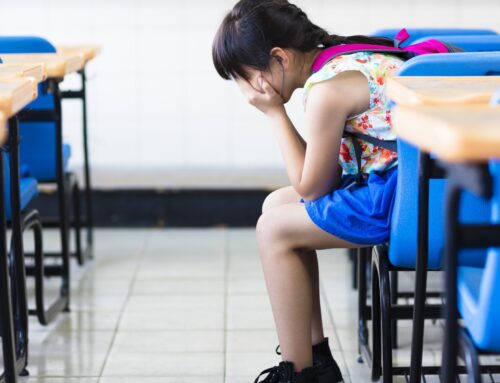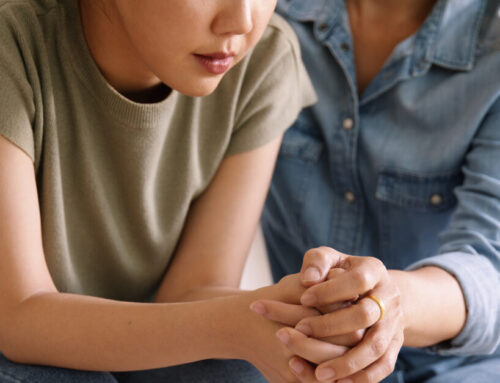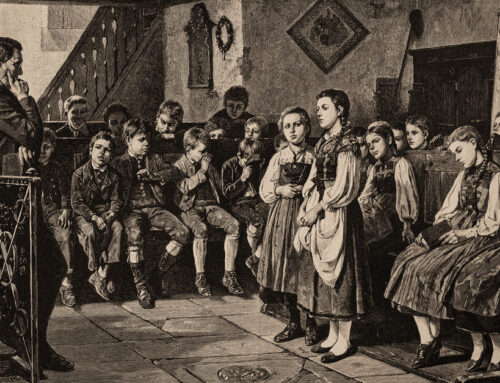
The typical American teacher works 2,000 hours a year, according to Education Week. And only about half of that time is spent on classroom instruction.
Apart from instruction, teachers spend a huge amount of time prepping for lessons and getting involved in the lives of students inside and outside the classroom.
Educators carry the massive responsibility of securing America’s future by teaching our children. After a child’s parents, teachers will have the most influence on the next generation. Their time and effort should be recognized as noble and valuable.
So should their personal beliefs.
More often than not, teachers are forced to operate within the bounds of regulations and policies that can be trivial and suffocating. The red tape of administration entangles every teacher at some point. But even more so for the teacher with a strong personal faith.
Actions that aren’t illegal are often turned into political issues, causing trouble and heartache for teachers (and students) who simply want the freedom to practice their religion.
If you’re a teacher who wants to live out your beliefs while teaching—but you feel discouraged or fear it isn’t even possible—take a step back with me.
Today, we’ll explore the ins and outs of teachers’ religious rights in the classroom.
Why Public Schools Need Teachers with Strong Faith
Even though you may feel discouraged—or even attacked or repressed by an unfriendly system—it’s important to remember that you’re still a critical part of building America’s future.
Here’s why.
First of all, your students are watching you. More often than not, the first opportunity teachers have to share their beliefs is by simply showing students their values through their actions.
For example, as the majority religion in America, many Christian teachers have asked about the legal expression of their beliefs:
Table Salt shares that, “Christian teachers can show students that there is a different way to live. By being people of integrity who are living a fulfilling life, they serve as a positive example for the young people they educate.”
Sharon Connor, North Central University Education professor, experienced the effectiveness of this way of life while teaching public school. “‘Right after I began teaching in a public school, I had students stop by my room after school and ask me, ‘You are a Christian, aren’t you?’ When asked how they knew – the answer was simply – ‘You can tell.’”
“Public school is where ‘the least of these’ gather daily,” writes Carrie Birmingham, Professor of Education at Pepperdine University. She points out, “Education is compulsory in the United States, and public schools are where everyone’s children go to comply with the law, unless their parents take the initiative to secure another way. Metaphorically—and all too often literally—hungry, thirsty, naked, sick, and imprisoned, American public school students are in great need.”
Aside from parents, teachers spend the most time with children throughout the week. “On average teachers are at school an additional 90 minutes beyond the school day for mentoring, providing after-school help for students,” says Scholastic. This additional mentorship is never wasted.
In an interview with NWEF President Melvin Adams, pastor and former public school teacher Tom McCracken tells this story of how his wife (also a public school teacher at the time) was able to consistently impact a student with her faith.
“My wife, years ago, brought a student home. And this was a student that was very ornery—a discipline-active student—and berated my wife at many occasions.
And my wife brought her home and she looked at my wife and she said, ‘Why are you always so nice to people?’ And I don’t know what my wife’s reply was, but the student looked at her as somebody that’s not in the faith world, somebody that is very rebellious and angry and said, ‘Well, you know what, Mrs. McCracken, you must be one of those real Christians.’”
Thirdly, teachers of faith can help bring balance to an agenda-driven environment.
Again, we turn to the large population of Christian teachers as an example: “The education field can tend to be on the liberal and secular side of the spectrum, and it sometimes directly opposes Christian viewpoints. [But] teachers who are Christian can be a voice of balance in this environment when conversing with other teachers as well as with their own students,” says Table Salt.
This is where it gets trickier.
These days, there’s a fine line between what’s actually illegal and what’s just overly political. Conversing with other teachers and students doesn’t sound like something that would be dangerous. But some would condemn teachers for “proselytizing” or “preaching” when the teacher was carrying on a legal conversation in an appropriate context.
Know your rights!
So what are these legal boundaries and “appropriate contexts”?
McCracken knows, from experience, that there are a lot of teachers “that don’t really know what they can do, what they can say, what they can’t, and so err on the side of safety because that’s their job; that’s their income. They check their faith in the door of the classroom.”
It doesn’t have to be that way! When it comes to instances of practicing, expressing, or sharing their faith at school, teachers must follow some guidelines, but they have some key freedoms that shouldn’t be overlooked.
Below is a summarized version of a list from Focus on the Family concerning the rights and boundaries of teachers practicing their religious freedom.
- As a teacher, you can respond when a student directly asks you a question about your personal beliefs. When answering such questions, it’s best to preempt your answer with a clear statement that you are expressing your personal perspective. This is to distinguish your views from those of the school.
- You can give factual explanations of religions in your classrooms and provide classroom instruction about religious beliefs in a way that meets state academic standards and related curriculum requirements, especially when doing lessons about history, culture, or literature. But these topics must be approached in an objective and purely educational manner—i.e., it must be academic, not devotional. (Read more on teaching religion and teaching about religion here.)
- You can engage in religious activities with other adult educators before and after school. This can include after-school Bible study and prayer groups for teachers or the distribution of invitations to religious-themed community events among educators (if the school already allows teachers to distribute flyers to one another about community-related activities).
- You can support students who are engaging in religious-freedom activities or events. Perhaps the best way teachers can do this is to recognize and allow students’ free speech and religious freedom activities. You can also show support by volunteering to serve as a faculty sponsor for student-led religious clubs. But when it comes to promotional efforts like putting up posters or making announcements, all of those efforts should be initiated and led by students.
Check out this article by the National Coalition Against Censorship to find additional information about how religious liberty impacts teachers’ roles in public schools. These laws vary from state to state. McCracken encourages teachers to “be informed, to read the law, to find out what [you] can and can’t specifically do.”
Students’ Rights
Interestingly, students have a lot more freedom than teachers when it comes to practicing their faith at school.
Candi Cushman has compiled a list for the Ethics and Religion Liberty Commission (ERLC) detailing the religious activities that students are permitted to engage in at school, which has been paraphrased and summarized below:
- Students can pray at school: silently or quietly pray before eating lunch, together in groups to say a prayer around the flagpole before or after school, or pray before or after a sporting event. This is because student prayers are considered to be private, personal speech. These prayers are allowed as long as they’re student-led (rather than being adult-led or school endorsed), aren’t disrupting academic instruction, and are voluntary—meaning no student feels coerced to participate.
- Students can share Scriptures with their friends. Usually, students can voluntarily express their personal and religious beliefs to their classmates through verbal or written expressions, as long as they follow school policy and do not engage in these activities during classroom or instruction time.
- Just like students can bring other favorite books they are reading to school, they can also bring their Bibles or other religious books and read them during free time.
- Students can participate in religious-themed events: students and faith-based clubs have equal access rights to participate in student-led events. Courts have said that school officials must remain neutral in how they treat students’ activities and free-speech expressions.
Check out the full article ERLC to get more information about students’ religious rights in school.
Keep on keeping on!
Even though you might not always see results of practicing your faith as a teacher—whether it be leading by example, developing relationships with students, engaging in conversation with your fellow teachers, or doing your best to present unbiased instruction—remember that you make a lifelong impact on each of your students.
Your vision to impact kids through the education system is noble, and here at the Noah Webster Educational Foundation, we want to encourage and equip you! Check out our blog to learn more about topics like the role of instruction and faith and morality in education! You can also watch the full interview with Pastor Tom McCracken here.





[…] Wondering if public school teachers or other faculty have religious freedom while on school grounds? Learn more here. […]
[…] To learn more about teachers’ rights to practice their faith in public education, read our article “Do Public School Teachers Have Religious Freedom?” […]
[…] you’d like to learn more about teachers’ freedoms, check out our article on public school teachers’ religious freedoms. Or listen to our podcast episode on freeing teachers from usurping […]
[…] you’d like to learn more about teachers’ freedoms, check out our article on public school teachers’ religious freedoms. Or listen to our podcast episode on freeing teachers from usurping […]